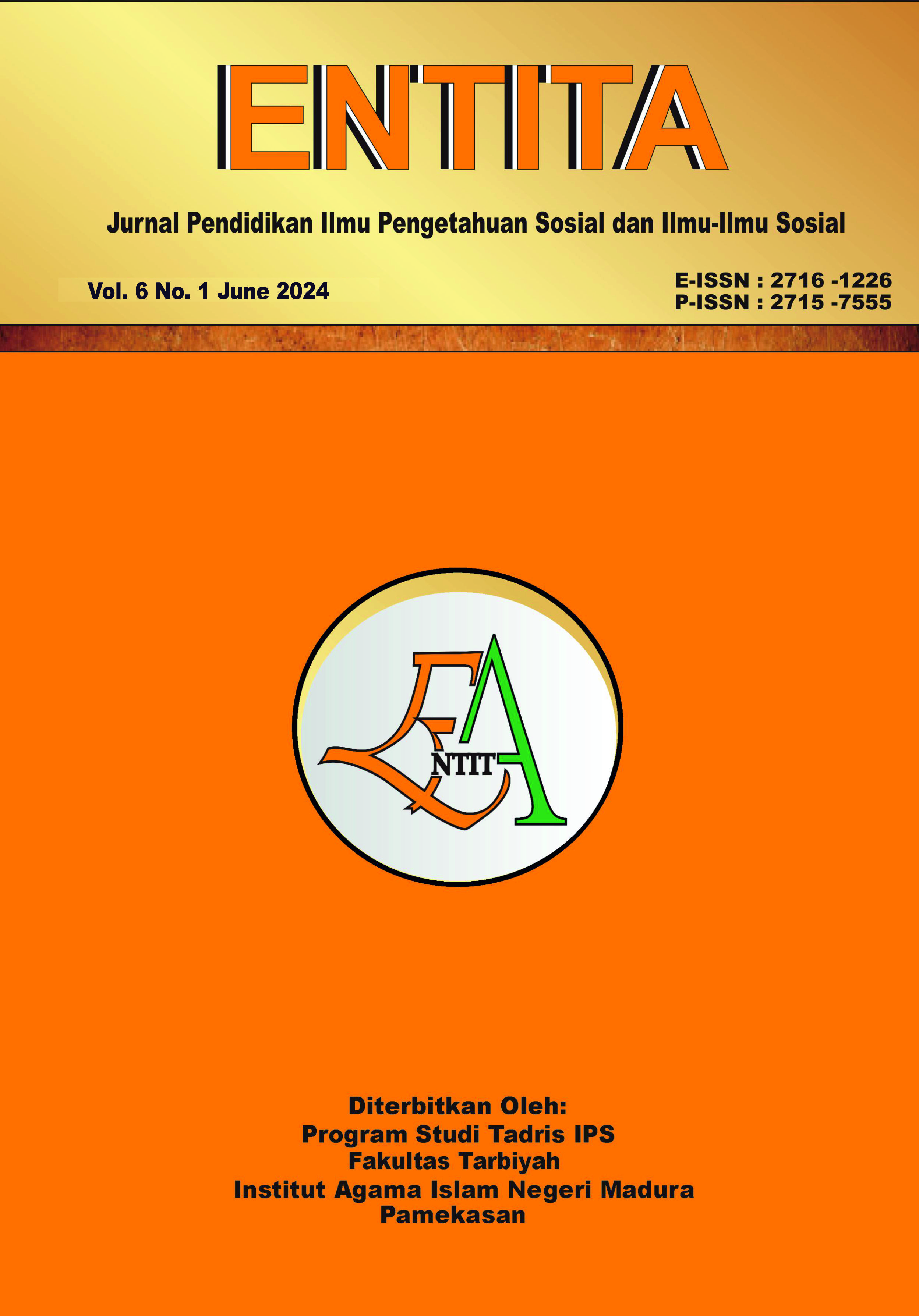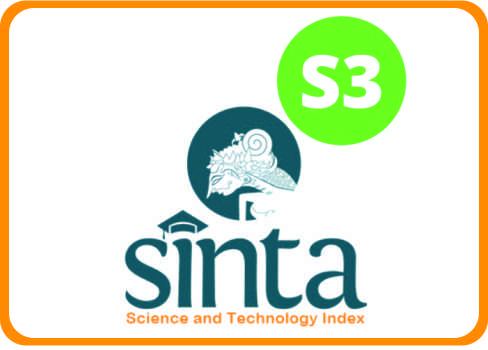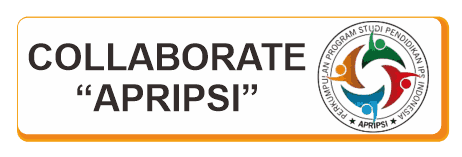Improving Students Learning Activeness in Social Studies Subjects through Student Teams Achievement Division (STAD) Cooperative Learning Model
 Abstract views: 251
,
Abstract views: 251
,
 PDF downloads: 170
PDF downloads: 170
Abstract
This research is motivated by the problems found in class VII E at SMPN 2 Pamekasan, namely the low level of student learning activeness in social studies lessons, in the classroom the teacher still uses the lecture method in explaining the learning material and continued with practice questions, as a result learning activities become unvaried and limited. cooperative learning model type Student Teams Achivement Division (STAD) is used to increase student activeness. This research used classroom action research (PTK) which was carried out in two cycles, each cycle consisting of four stages, namely the planning, implementation, observation, and reflection stages. The subjects of this study were students of class VII E consisting of 32 students. The research instruments used in this study were observation guidelines for student learning activeness, and field notes. While the data collection techniques used in this research are participatory observation, interviews, and documentation. The data analysis used is qualitative data analysis, which consists of data reduction, data presentation, and conclusion drawing, and quantitative data analysis with a percentage of the assessment of student learning activeness in the application of the Student Teams Achivement Division (STAD) type cooperative learning model.
Based on the results of the study it can be concluded that there is an increase in student learning activeness in social studies learning from cycle I to cycle II. Indicators pay attention to the teacher's explanation increased 12.51% from cycle I to cycle II. Indicators record or summarize the subject matter increased 28.13% from cycle I to cycle II. Indicators asking questions to teachers or friends experienced an increase of 26.57% from cycle I to cycle II. Indicators answering questions from teachers or friends increased 39.06% from cycle I to cycle II. Indicators discussing with group members in solving problems increased 21.88% from cycle I to cycle II. Indicators helping fellow group members in understanding the subject matter increased 14.07% from cycle I to cycle II. The indicator of doing tasks given by the teacher increased 28.12% from cycle I to cycle II. The indicator of doing quizzes individually increased 39.06% from cycle I to cycle II. And student learning activeness showed a score of 93.75% at the end of the cycle.
Downloads
References
Hamzah B. Uno, Herminanto S, I. M. C. (2001). Pengembangan Intrumen untuk Penelitian. Delima Pers.
Laa, N., Winata, H., & Meilani, R. I. (2017). Pengaruh model pembelajaran kooperatif tipe student teams achievement division terhadap minat belajar siswa. 2(2), 139–148.
Mawikere, M. C. S. (2022). EDULEAD: Journal of Christian Education and Leadership. 3(1), 133–139. https://doi.org/10.47530/edulead.v3i1.99
Nurdyansyah, E. F. F. (2016). Inovasi Model Pembelajaran Sesuai Kurikulus 2013. Nizamial Learning Center.
Oktafiana, S. (2021). Strategi Pembelajaran Implementasi Pembelajaran IPS Pada Kurikulum 2013. Madza Media.
Prijanto, J. H., & Kock, F. De. (2021). Peran Guru Dalam Upaya Meningkatkan Keaktifan Siswa Dengan Menerapkan Metode Tanya Jawab Pada Pembelajaran Online. Scholaria: Jurnal Pendidikan Dan Kebudayaan, 11(3), 238–251.
Rusman. (2013). Model-Model Pembelajaran Mengembangakan Profesionalisme Guru (2nd ed.). Rajawali Pers.
Safitri, R. (2018). Penerapan Model Pembelajaran Kooperatif Tipe Student Teams Achievement Division Terhadap Motivasi Belajar Peserta Didik Di SMAN 8 Banda Aceh. 06(01), 9–16. https://doi.org/10.24815/jpsi.v6i1.10713
Subroto, I. (2021). Meningkatkan Hasil Belajar Kompetensi Keahlian Teknik Komputer dan Jaringan Dengan Penerapan Model Pembelajaran Team Games Tournament ( TGT ). I, 14–19.
Suci Setyawati, Firosalia Kristin, I. A. (2019). PENERAPAN MODEL PEMBELAJARAN PROBLEM BASED LEARNING ( PBL ) UNTUK MENINGKATKAN KEAKTIFAN DAN HASIL BELAJAR SISWA KELAS 2 SD. VI(2), 93–99.
Sumadoyo, S. (2013). Penelitian Tindakan Kelas. Graha Ilmu.
Supono. (2022). Impementasi Model STAD Tingkatkan Hasil Belajar IPS Terpadu. 2(4), 203–214.
Suryana, Y. R., Somadi, T. J., & Pasundan, U. (2018). Kajian Model Pembelajaran Kooperatif Tipe STAD ( Student Teams Achievement Division ) Dalam Upaya Meningkatkan Efektifitas Proses Belajar Mengajar Akuntansi. II.
Toenlioe, A. J. (2016). Sosiologi Pendidikan (Nurul Falah Atif (ed.)). PT Refika Aditama.
Wahyuningsih, E. S. (2020). Model Pembelajaran Mastery Learning: Upaya peningkatan Keaktifan dan Hasil Belajar Siswa. Deepublish.
Wulandari, I. (2022). Model Pembelajaran Kooperatif Tipe STAD ( Student Teams Achievement Division ) dalam Pembelajaran MI. 4(1).
Copyright (c) 2024 Entita: Jurnal Pendidikan Ilmu Pengetahuan Sosial dan Ilmu-Ilmu Sosial

This work is licensed under a Creative Commons Attribution-NonCommercial 4.0 International License.
ENTITA: Jurnal Pendidikan Ilmu Pengetahuan Sosial dan Ilmu-Ilmu Sosial operates an Open Access policy under a Creative Commons Non-Commercial 4.0 International license. Authors who publish with this journal agree to the following terms:
- The copyright of the received article once accepted for publication shall be assigned to the journal as the publisher with licensed under a

- Journal is able to enter into separate, additional contractual arrangements for the non-exclusive distribution of the journal's published version of the work (e.g., post it to an institutional repository or publish it in a book), with an acknowledgement of its initial publication in this journal.
- Journal is permitted and encouraged to post their work online (e.g., in institutional repositories or on their website) prior to and during the submission process, as it can lead to productive exchanges, as well as earlier and greater citation of published work (see The Effect of Open Access).
- Here is Copyright Transfer Form that author can download and send to OJS during submission.

















